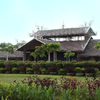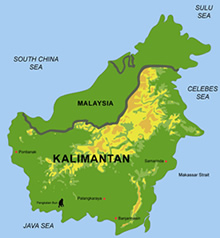remote sensing

our work
kalteng remote sensing shows trends in environments like Kalimantan.
- TanDEM-X elevation model data for canopy height ...
- Monitoring Forest Threats with C- and L-band SAR, ...
- Ground Penetrating Radar Mapping of Peat ...
- Spectral Variability and Discrimination ...
- Kalteng Consultants Company Profile, Oct
- Visiting of Wetlands International Camp on ...
- Ortho Photo Mosaik von Kelurahan Tumbang Tahai ...
- Ortho-Photo Mosaik from Lake Batu, north of ...
- International Symposium & Workshop on Tropical ...
- The Contribution of CHRIS/PROBA Data for Tropical ...
- Workshop on Spatial Planning and new Remote ...
- Ortho-Photo Generation and Mosaiking of City ...
- Ortho-Photo Mosaik from Kecamatan Bukit Batu, ...
- International Workshop, Wild Fire and Carbon ...
- Planning Group for Kecamatan Bukit Batu gathered ...
- Carbon Storage in the Northern Sabangau Area ...
- Peat Land Topography derived from 30m Resolution ...
- Peat depth, minerals below peat, carbon, fires ...
- Carbon Storage in the Northern Sebangau Area ...
- Peatland Topography DEM-measurements with ...
- Precise Measurements of Peatland Topography and ...
- Environmental Management Study of the Tangkiling ...
- Environmental Field Trials and GIS Image ...
- Land Cover Change on Peatland in Kalimantan ...
- The Impact of Logging and Land Use Change in ...
- Tracks along the Kalimantan Highway from Kasongan ...
- Fires in 2002 monitored on the Landsat-images 14 ...
- The Amount of Carbon released from Peat and ...
- Land use Change in Central Kalimantan over the ...
- Remote Sensing and Aerial Survey of Vegetation ...
- Monitoring land cover and impacts, Remote Sensing ...
- Fire Impacts and Carbon Release on Tropical ...
- Ecological Impact of the one Million Hectare Rice ...
- Land Use Change and (Il)-Legal Logging in Central ...
- Peat fires in Central Kalimantan, Indonesia: Fire ...
- Environmental Helicopter Flight Trails with ...
- Impact of the 1997 Fires on the Peatlands of ...
- Application of Remote Sensing and GIS to monitor ...
- Monitoring of 1997/1998 Fires and Burnt Scars in ...
- Flight survey over the Mega Rice Project and over ...
- Application of Remote Sensing and GIS to survey ...
- Mega Rice Project in Central Kalimantan, ...
- Satellite Images and Aerial Photos from the ...
- The need for better
- Remote Sensing Verification by Aerial Surveys and ...
- NATURAL RESOURCE FUNCTIONS, BIODIVERSITY AND ...
- Excursion to Central Kalimantan, ...
- Satellite Images and Aerial Photography’s from ...
- Symposium of International Peat Society, ...
- Indonesia Travel to Jakarta, Bali and Kalimantan ...
- The Mega Rice Project Central Kalimantan ...
- Land Use Planning and Environmental Monitoring in ...
- Bildverarbeitung von Sensorbildern zur Erstellung ...
- GIS-Workshop, Camp km48 Sangai.
- Monitoring Land Use Change on Tropical Peatland ...
- Seminar on Scientific Implications of the ...
- Report of Ground Truth Campaigns incl. Aerial ...
- Ground and Helicopter verification of Satellite ...
- Environmental Detection from Satellite and ...
- First visit to Central Kalimantan in June 1995, ...
- Environmental Helicopter with Modular Sensor ...
- Remote Sensing with a Thermal Imager on an ...
- The Use of an Environmental Helicopter for the ...
- EUROMAR-SEASTARS a Modular Multi-Sensor System ...
gallery

image gallery
Find a large collection of images from many years of exploration by kalteng-consultants.
History Borneo - Kalimantan · Excursions to peatland 1996 · Mega Rice Project 1999 · 2004 · 2005 · 2006 · 2007 · 2008 · 2009 · 2010 · 2011 · 2012 · 2013 · 2014 · 2015 · 2016-March · 2016-August ·
remote sensing
Remote Sensing Verification by Aerial Surveys and Ground Truth Campaigns 1997 and 1998 in Central Kalimantan, Indonesia - Peat Swamp Forest, Mega-Rice-Project and Fires, 3-1999
CRISP-Workshop,
Singapore 3-1999
kalteng_1999-CRISP-BOEHM_ARTICLE.pdf
by
H.-D.V. Boehm & F. Siegert

CRISP-Singapore: Viktor Boehm, Lim Hock
Abstract
The overall aim of Kalteng Consultants’ research programme, which started in 1995, is an investigation into the evolution and the economic potential of the peat swamp forest (P.S.F.) resource in Central Kalimantan by remote sensing techniques.
A multispectral and multitemporal image analysis has been used to monitor the environmental importance and agricultural potential as well as wildlife conservation aspects. This report gives information about field trails to Central Kalimantan in March 1997 and in June and Nov. 1998. Typically, the natural vegetation that is found in most tropical peatlands are rainforest trees of commercial value, e.g. Ramin. Selective harvesting is probably the most sustainable use of this resource, but when more destructive developments take place, sustainable harvesting can no longer be practised.
The current status of forestry on tropical peatlands needs to be determined - especially defining the different categories of forests, e.g. production forest, conversion forest, protected forest, along with forest policies on logging and other activities. The 1 Million ha (Mega)-Rice-Project for rice cultivation, which included transmigration schemes, started with a feasibility study and, in April 1996, with the digging of the irrigation channels into the peat swamp. The development of an area of one million hectares in Central Kalimantan, situated between the Rivers Sebangau in the west, River Kahayan, River Kapuas and River Barito in the east, and the Java Sea in the south, is planned and partly realised. The total area of impact is 1.4 million hectares for the Blocks A, B, C, D and E. The project faces problems of peat domes with a height up to 1 0m between the main rivers. Satellite-images of the heavy forest fires in Autumn 1997 in Central Kalimantan has been processed.
To undertake global monitoring/survey in a short time, it was essential to use LANDSAT Thematic Mapper, SPOT and ERS1/2 Radar images, linked to a programme of field checking of forest and the status of development of peatland and peat condition. Remote sensing technology was used for all survey, monitoring and planning tasks. This paper presents some of the results from LANDSAT, SPOT, ERS1 and ERS2 image processing activities, from aerial surveys on 13 and 27 June and 3 November 1998, as well as from several ground truth campaigns in 1997 and 1998 (compare with Kalteng report 1996). Between 1995 and 1998, this area of Central Kalimantan was visited 7 times.

